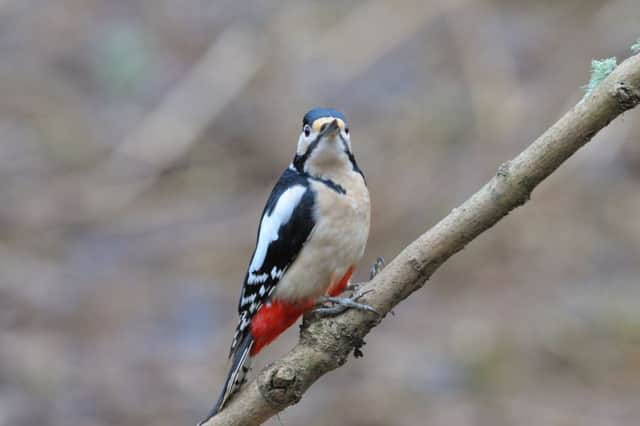LIANNE DE MELLO: Ten things you didn't know about woodpeckers


In the bare branches of our woodlands, great spotted woodpeckers are drumming, beating out the rhythm of the season.
Here’s the trust’s guide to 10 things you probably didn’t know about these amazing birds.
Advertisement
Hide AdAdvertisement
Hide Ad1 The most common species of woodpecker found in our woods is the great spotted woodpecker. Their cousins include the green woodpecker – which only colonised the Isle of Wight in 1910 – and its smaller, rarer cousin, the lesser spotted woodpecker.
2 Great spotted woodpeckers are very easy to spot in our trees. They have black and white plumage and a large red patch under the tail. You can tell males apart from females by the scarlet patch on the back of the necks.
3 Both male and female great spotted woodpeckers drum, although the male definitely puts more into it, advertising for a mate and proclaiming his territory – as well as looking for tasty insects in tree trunks.
4 He hammers away at his favourite branch in bursts of up to 20 times per second with a force four times as strong as that of a football being kicked by Wayne Rooney!
Advertisement
Hide AdAdvertisement
Hide Ad5 The force can reach an incredible 1000G. For a human, that would be more than enough to knock you unconscious and cause major brain damage, if not worse.
6 The bones of the woodpecker’s skull have evolved a durable combination of spongy shock-absorbers, powerful neck muscles and a specially-adapted tongue bone that acts as a seat belt, holding the brain tightly in place.
7 Woodpeckers have a translucent third eyelid to stop all that sawdust getting into their eyes.
8 Woodpeckers are tree-climbing experts, and use their tail to anchor themselves to the sides of trees as they search for insects.
Advertisement
Hide AdAdvertisement
Hide Ad9 Spot woodpeckers by wrapping up warm and go out into the woodlands near you on a still, clear day. Wildlife Trust reserves like Swanwick Lakes nature reserve and Blashford Lakes nature reserve are good places to listen out for the quick-fire drumming.
10 Alternatively, woodpeckers have been known to visit gardens, so keep your feeders topped up with peanuts and your eyes peeled!
Download your free guide to woodland birds at hiwwt.org.uk.